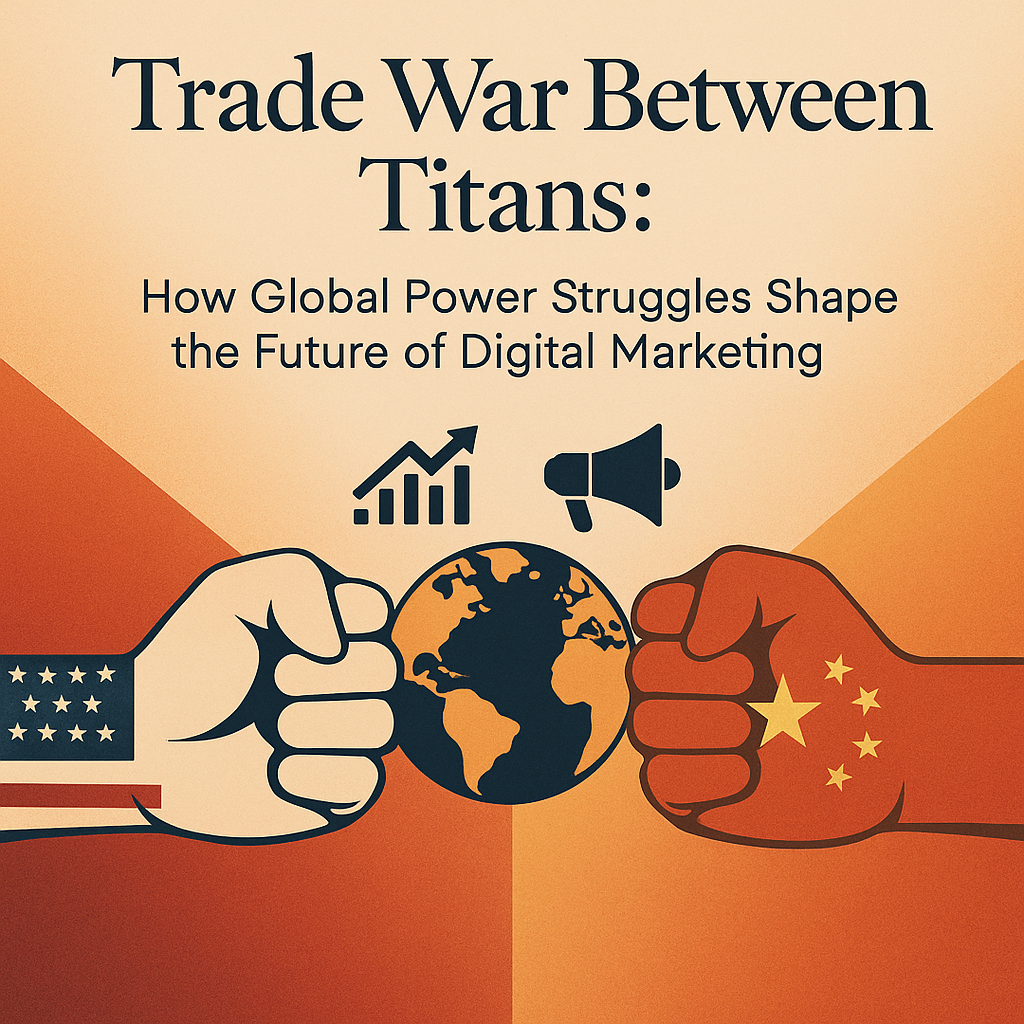In recent years, headlines about trade wars, sanctions, and global economic disputes have dominated news cycles. But while much attention has been focused on tariffs and supply chains, there’s a quieter war brewing — one that impacts the digital world marketers operate in every day.
The so-called “trade war between titans” — led by the United States, China, and their respective allies — is redrawing the global digital map. From platform restrictions to data localization laws, these geopolitical tensions are forcing digital marketers to adapt faster than ever before.
Let’s break down what this means, and how marketers can stay ahead in a world where international politics increasingly shape digital strategy.
Titans at War: The Key Players & Platforms Under Pressure
This isn’t just about economics anymore — it’s about control of the digital future.
United States
Home to most of the world’s largest digital platforms (Google, Meta, Amazon, Microsoft), the US holds significant global influence in advertising, search, cloud computing, and AI development.
China
With tech giants like Alibaba, Baidu, Tencent, and ByteDance (Douyin/TikTok), China has created a parallel digital ecosystem behind its Great Firewall — one that’s growing in scale and sophistication.
Europe & ASEAN
These regions are increasingly caught between both powers, creating policies focused on digital sovereignty (e.g., GDPR in the EU) and strengthening local ecosystems.
What’s happening?
- Platform bans: TikTok faces restrictions in the US and EU; Western platforms are blocked in China.
- Export controls: US bans on chip exports and AI technologies to China affect tool availability.
- National firewalls: Countries like Russia and Iran are building isolated internets.
- Fragmented policies: Privacy, censorship, and advertising regulations differ wildly across regions.
What This Means for Digital Marketers
The impact on digital marketing isn’t theoretical — it’s already reshaping how we plan, target, and engage global audiences.
🔄 Platform Fragmentation
Marketers can no longer assume a unified global strategy. What works on Facebook in the US won’t work in China — where platforms like WeChat, Weibo, and Douyin dominate.
Tip: Build region-specific strategies and localize content not only linguistically, but contextually.
💸 Ad Spend Volatility
Geopolitical uncertainty creates unpredictable ad costs and audience targeting restrictions, especially with evolving AI-driven bidding systems.
Tip: Monitor ROAS (Return on Ad Spend) closely by region and shift budget dynamically.
🔐 Data Localization & Privacy Laws
More countries now demand user data be stored locally and limit cross-border transfers. This affects:
- Ad personalization
- CRM systems
- Google Analytics implementations
Tip: Work with privacy-compliant tools and prioritize first-party data strategies.
📦 Supply Chain Disruptions
For ecommerce businesses, international logistics are no longer guaranteed. Delays or pricing shifts can make or break a campaign.
Tip: Coordinate tightly between marketing and operations. Delay sensitive ads until stock is secure.
Strategic Moves for 2025 and Beyond
✅ 1. Diversify Your Digital Footprint
Don’t depend on one platform or one country. Build a presence across:
- Owned channels (website, blog, email)
- Local platforms (e.g., Shopee in SEA, Kakao in Korea)
- Global alternatives (e.g., TikTok + YouTube Shorts + Reels)
✅ 2. Prioritize Resilience, Not Just Reach
Invest in flexible creative, campaign backups, and geo-specific messaging. Be ready to pivot if a platform is banned or policy changes overnight.
✅ 3. Embrace Owned Media & Community Building
In a fragmented world, community is your anchor. Strengthen email lists, subscriber platforms, and private groups where algorithm shifts and political bans have less power.
✅ 4. Stay Geo-Informed
Follow updates from global marketing platforms, policy blogs, and digital trade reports. Knowing what’s coming can help you prepare before disruption hits.
Conclusion: Adaptation is the New Competitive Advantage
As the digital world reflects the tensions of the physical one, marketers must stop thinking in silos. We are no longer just dealing with algorithms and ad copy — we’re navigating a landscape where politics, regulation, and technology intersect.
In the new era of digital marketing, success belongs to the strategists, not just the tacticians. By proactively adapting to this “trade war between titans,” your brand can thrive not in spite of disruption — but because of it.


Leave a Reply